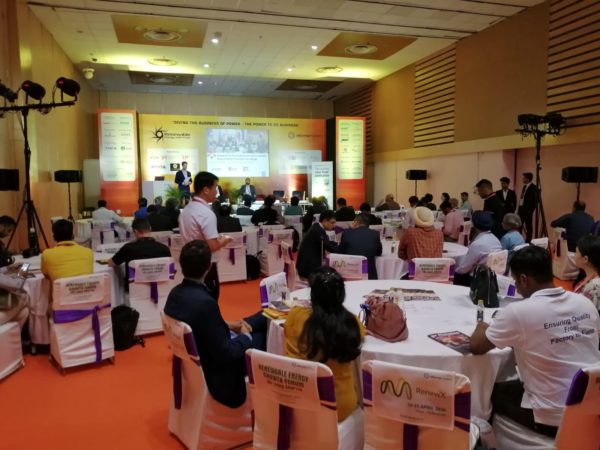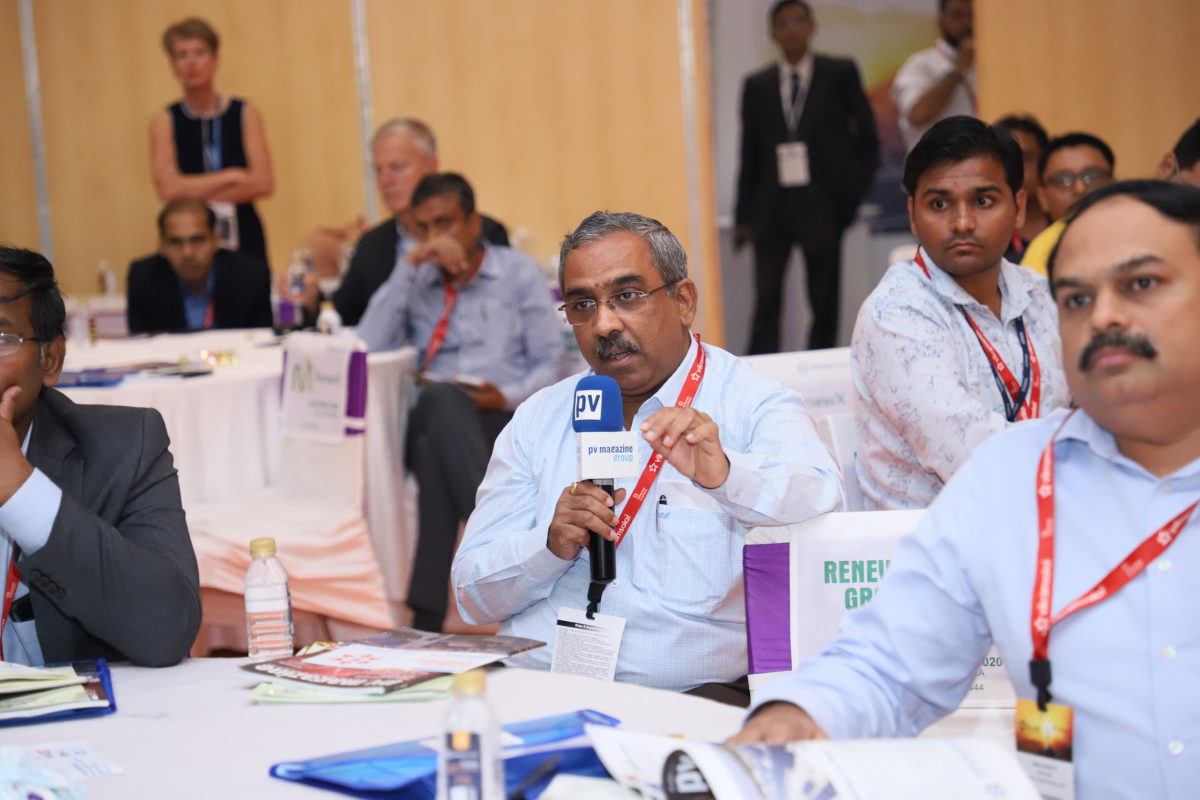With some 13.5 GW of PV forecast to be installed in India over the next 12 months, according to analysts Bridge to India, the country’s solar sector will be met with a number of challenges. Not least among these is the availability and cost of land suitable for large scale solar arrays.
One solution to this problem is floating PV systems, which can be located on water bodies including irrigation water reserves, hydropower reservoirs or natural lakes. Given India’s existing 45 GW of hydropower generation capacity, there appears to be ample opportunity for PV on water.
Buoyant opportunities
Major Indian thermal generation company NTPC is currently developing a portfolio of floating solar systems on water storage reservoirs alongside their generators. Shreenidhi Sharma, the manager of solar development for the company set out how the company is anticipating both in terms of a reduction in evaporation from the reservoirs and the benefit of utilizing existing grid connection points.
Sharma set out the extensive research that the company is carrying out in terms of executing long-lasting floating arrays. He also confirmed that successful tenders for 272 MW of floating PV had been carried out by the company. Prices for floating systems, he noted, have been competitive with those achieved on ground mounted arrays – despite the numerous complications floating PV brings with it.
Some of these very complications, and a lack of data as to long term performance, is causing one of India’s leading module producers Vikram Solar to be cautious when it comes to floating PV, said Ivan Saha, who leads the company’s manufacturing and serves as its CTO. While Vikram was very early to floating PV development, having established a 100 kW project five years ago, he advised caution to prospective developers. While the opportunities for floating PV in India are undeniable, Saha noted, more work in terms of long term durability and array planning is required.
Challenges to O&M and optimization
Julia Serebro, from power electronics and optimizer supplier SolarEdge spoke of the challenges in O&M, safety and on potential issues that may reduce power output in floating arrays. Having supplied inverters to a large number of floating arrays globally, Serebro spoke of module mismatches being commonplace – and demonstrated a case study via the SolarEdge monitoring platform.
While soiling as a result of sand and dust on floating PV sites may not be as severe as on land, as noted by Parag Sharma, Chief Operating Office, Renew Power at the Future PV Roundtable, bird droppings can also cause problems for waterborne installations. SolarEdge’s Serebro demonstrated how bird droppings can result in reduced power output and mismatches within the string, causing the whole string to underperform. Module level power electronics, Serebro said, is ideal for averting such situations. Alerts on monitoring systems can be set to let O&M providers know when cleaning is required, she explained.
Module durabilitiy
By virtue of the modules in a floating PV array being placed close to the water surface, and in hot climates subject to very high humidity levels, moisture ingress into modules was also identified as a potential pitfall to floating PV. Vivek Chaturvedi, an Indian solar industry veteran and the regional business director for DSM Advanced Solar noted that unsuitable backsheet materials can lead to failures and degradation – including PID. Chaturvedi echoed Vikram Solar’s Saha’s remarks about the need for more data, and potentially more robust standards to inform project EPCs as to what module BOM’s are suitable for floating PV.
While in some markets, such as China, dual-glass modules have been favoured in the past for installations over water, Chaturvedi noted that heavy modules are not well suited for many floating PV mounting structures. While replacing a faulty dual-glass module on land is troublesome, on water it is prohibitively so, he said.
 Panelists at the Future PV Roundtable were met with a plethora of questions from attendees, indicating the current high level of interest in the market for information as to floating PV applications. These included the possibility of floating PV on coastal or tidal areas. This, of course introduces the additional corrosive impacts of salt water, a question that left many of the panelist urging extreme caution.
Panelists at the Future PV Roundtable were met with a plethora of questions from attendees, indicating the current high level of interest in the market for information as to floating PV applications. These included the possibility of floating PV on coastal or tidal areas. This, of course introduces the additional corrosive impacts of salt water, a question that left many of the panelist urging extreme caution.
Looking forward, Rishabh Jain, an analyst with CEEW Centre for Energy Finance confirmed that an annual installation figure of around 500 MW per year of floating PV could be expected from the Indian market in the next five years.
This content is protected by copyright and may not be reused. If you want to cooperate with us and would like to reuse some of our content, please contact: editors@pv-magazine.com.









By submitting this form you agree to pv magazine using your data for the purposes of publishing your comment.
Your personal data will only be disclosed or otherwise transmitted to third parties for the purposes of spam filtering or if this is necessary for technical maintenance of the website. Any other transfer to third parties will not take place unless this is justified on the basis of applicable data protection regulations or if pv magazine is legally obliged to do so.
You may revoke this consent at any time with effect for the future, in which case your personal data will be deleted immediately. Otherwise, your data will be deleted if pv magazine has processed your request or the purpose of data storage is fulfilled.
Further information on data privacy can be found in our Data Protection Policy.